Previous Lives
Visionary Dharma King
Trisong Detsen
 In some accounts, it is written that the Bodhisattva Manjushri, wishing to spread the Dharma and to ensure its proliferation, decided to take rebirth as a king of Tibet. This incarnation was Trisong Detsen, who ruled over Tibet from 754 CE to 799 CE. Known as the second of Tibet’s Three Dharma Kings, he was the monarch responsible for Tibet’s official adoption of Buddhism as its state religion.
In some accounts, it is written that the Bodhisattva Manjushri, wishing to spread the Dharma and to ensure its proliferation, decided to take rebirth as a king of Tibet. This incarnation was Trisong Detsen, who ruled over Tibet from 754 CE to 799 CE. Known as the second of Tibet’s Three Dharma Kings, he was the monarch responsible for Tibet’s official adoption of Buddhism as its state religion.
According to one source, Trisong Detsen was born to Emperor Me-Agtsom and Empress Chin Ch’eng Kun Chu, a Han Chinese princess from Tang China given in marriage to the Emperor in an effort to ease tensions between the two nations. The Empress was a devout Buddhist who influenced the Emperor and her young son’s interest in Han Chinese Buddhism.
It would be 754 CE by the time Trisong Detsen came into power. By then, Buddhism in Tibet had begun to decline after its initial introduction by the first Dharma King, Songtsen Gampo. Upon ascending the throne, Trisong Detsen proclaimed himself a Buddhist and granted royal patronage to the religion. This effectively formalised Buddhism as the official religion of Tibet.
Trisong Detsen’s next step was to curb the growing anti-Buddhist movement by removing xenophobic ministers who favoured the Bön religion during and after his father’s assassination. The fact the king himself adopted the new faith had a tremendous impact on the religious, cultural and political future of the country.
During his reign, Trisong Detsen presided over the administration of the Sangha. He also regulated the Tibetan Buddhist canon by laying down rules regarding the translation of scriptural texts from a foreign language into Tibetan, as well as the types of works that could be translated. He would go on to sponsor the translations of many of these works himself.
Trisong Detsen also established Samye, Tibet’s first Buddhist monastery. He did so under the guidance of Indian Buddhist masters such as Shantarakshita and Padmasambhava who had travelled from India and brought with them their teachings and lineages. Samye later became the site where the first seven Tibetans were ordained as Buddhist monks. It would also become the site where the famed two-year Samye Debate was held, between the Chinese Chan Buddhist monk Mo-ho-yen and the Indian Buddhist pandit Kamalashila. When the judges ruled in favour of Kamalashila, the pure Indian Buddhist tradition became Tibet’s de facto faith.
Without Trisong Detsen’s tireless patronage, Buddhism would not have achieved the lasting prominence that it saw in Tibet. Thus, Trisong Detsen is today fondly remembered as the monarch who oversaw the resurgence of a faith’s popularity, thereby ensuring its purity and survival at a time when many political and social forces were set against it.
